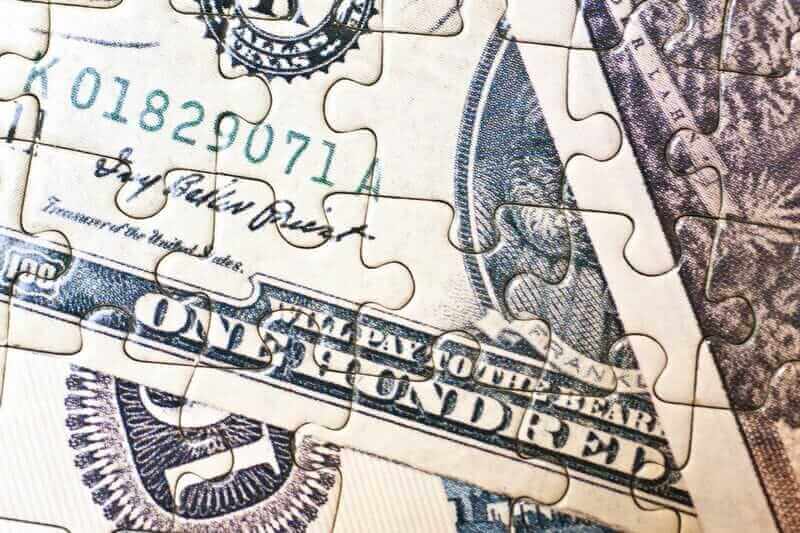
The dollar index (DXY00) this morning is up by +0.42%. The dollar is moving higher today on strength in US economic reports. Weekly jobless claims unexpectedly declined, the Mar S&P manufacturing PMI rose to a 1-3/4 year high, and Feb existing home sales unexpectedly rose to a 1-year high, hawkish factors for Fed policy. Also, weakness in GBP/USD is giving the dollar a boost after the BOE kept interest rates unchanged, and no policy member voted for a rate hike for the first time since September 2021. Today’s stock rally has curbed liquidity demand for the dollar.
US weekly initial unemployment claims unexpectedly fell -2,000 to 210,000, showing a stronger labor market than expectations of an increase to 213,000. Weekly continuing claims rose +4,000 to 1.807 million, showing a stronger labor market than expectations of 1.820 million.
The US Mar Philadelphia Fed business outlook survey fell -2.0 to 3.2, stronger than expectations for a decline to -2.5.
The US Mar S&P manufacturing PMI unexpectedly rose +0.3 to a 1-3/4 year high of 52.5, stronger than expectations of a decline to 51.8.
US Feb existing home sales unexpectedly rose +9.5% m/m to a 1-year high of 4.38 million, stronger than expectations for a decline to 3.95 million.
US Feb leading indicators unexpectedly rose +0.1% m/m, stronger than expectations of a -0.1% m/m decline.
The markets are discounting the chances for a -25 bp rate cut at 12% for the April 30-May 1 FOMC meeting and at 78% for the meeting after that on June 11-12.
EUR/USD (^EURUSD) this morning is down by -0.42%. The euro today gave up an early advance and turned lower after the Eurozone Mar S&P manufacturing PMI unexpectedly declined, a dovish factor for ECB policy. Losses in the euro accelerated after stronger-than-expected US economic reports boosted the dollar.
The Eurozone Mar S&P manufacturing PMI unexpectedly fell -0.8 to 45.7, weaker than expectations of an increase to 47.0. The Mar S&P composite PMI rose +0.7 to a 10-month high of 49.9, stronger than expectations of 49.7.
Swaps are pricing in the chances for a -25 bp rate cut by the ECB at 4% for its next meeting on April 11 and 86% for the following meeting on June 6.
USD/JPY (^USDJPY) this morning is up by +0.13%. The yen today is mildly lower but holding above Wednesday’s 4-1/4 month low against the dollar. Today’s rally in the Nikkei Stock Index to a new record high has curbed safe-haven demand for the yen. Also, higher T-note yields today are negative for the yen. Limiting losses in the yen is today’s stronger-than-expected Japanese trade and manufacturing activity reports.
Japanese trade news supported the yen as Feb exports rose +7.8% y/y, which was stronger than expectations of +5.1% y/y. Feb imports rose +0.5% y/y, right on expectations.
The Japan Mar Jibun Bank manufacturing PMI rose +1.0 to a 4-month high of 48.2. The Mar Jibun Bank services PMI rose +2.0 to a 10-month high of 54.9.
Swaps are pricing in the chances for a +10 bp rate increase by the BOJ at 5% for the April 26 meeting and 34% for the following meeting on June 14.
April gold (GCJ4) this morning is up +18.6 (+0.86%), and May silver (SIK24) is down -0.089 (-0.35%). Precious metals today are mixed, with April gold climbing to a contract high and nearest-futures (H24) gold posting an all-time high. Precious metals today have carryover support from Wednesday when the FOMC maintained its forecast for 75 bp of interest rate cuts this year. Also, a surge in gold buying by China is lifting prices as China’s non-monetary gold imports rose to 372.2 tons in Jan/Feb, up +53% y/y as consumers flock to gold to protect their wealth from China’s ongoing property crisis and turmoil in its stock market. In addition, today’s surprise action by the Swiss National Bank to cut interest rates boosted demand for gold as a store of value. Finally, the geopolitical risks in the Middle East continue to support safe-haven demand for precious metals.
Precious metals today fell back from their best levels, with silver falling into negative territory, after the dollar rallied on better-than-expected US economic reports, hawkish factors for Fed policy. Also, soaring global equity markets today have reduced safe-haven demand for precious metals.
On the date of publication, Rich Asplund did not have (either directly or indirectly) positions in any of the securities mentioned in this article. All information and data in this article is solely for informational purposes. For more information please view the Barchart Disclosure Policy here.






